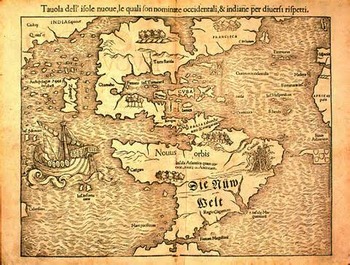Cycle in American History The New World
Mr W Loves Social Studies
14 Followers
Grade Levels
8th - 12th
Subjects
Resource Type
Standards
CCSSRH.6-8.2
CCSSRH.6-8.7
CCSSRH.6-8.8
CCSSRH.9-10.2
CCSSRH.9-10.3
Formats Included
- Flipchart File
Pages
20 pages
Mr W Loves Social Studies
14 Followers
Description
This is the third in a series of 7 lessons that teach American History in cycles. If you use them all they could be your whole year of American History or they could supplement what you want to do in class. Whether you want to look at American history in cycles or not these lessons will have a ton of information, resources, activities, web-quests, assessments, etc that you could use in your history class. I have even narrated them so you could just put it on and let the students and my narration teach the class. These lessons are based on the theory of Strauss and Howe that history occurs in 80 to 100 year cycles which is explained in their book The Fourth Turning. This lesson is about the NEW WORLD and traces colonial history from Jamestown to Bacon's Rebellion. This lesson takes the people and the events of this time period and relates them to the cyclical trends that Strauss and Howe have outlined. It is a new way to teach history.
There are also special pages one about slavery and one about the Iroquois.
This work is licensed under the Creative Commons Attribution-NonCommercial 4.0 International License. To view a copy of this license, visit http://creativecommons.org/licenses/by-nc/4.0/.
There are also special pages one about slavery and one about the Iroquois.
This work is licensed under the Creative Commons Attribution-NonCommercial 4.0 International License. To view a copy of this license, visit http://creativecommons.org/licenses/by-nc/4.0/.
Total Pages
20 pages
Answer Key
Included
Teaching Duration
2 Weeks
Report this resource to TPT
Reported resources will be reviewed by our team. Report this resource to let us know if this resource violates TPT’s content guidelines.
Standards
to see state-specific standards (only available in the US).
CCSSRH.6-8.2
Determine the central ideas or information of a primary or secondary source; provide an accurate summary of the source distinct from prior knowledge or opinions.
CCSSRH.6-8.7
Integrate visual information (e.g., in charts, graphs, photographs, videos, or maps) with other information in print and digital texts.
CCSSRH.6-8.8
Distinguish among fact, opinion, and reasoned judgment in a text.
CCSSRH.9-10.2
Determine the central ideas or information of a primary or secondary source; provide an accurate summary of how key events or ideas develop over the course of the text.
CCSSRH.9-10.3
Analyze in detail a series of events described in a text; determine whether earlier events caused later ones or simply preceded them.


